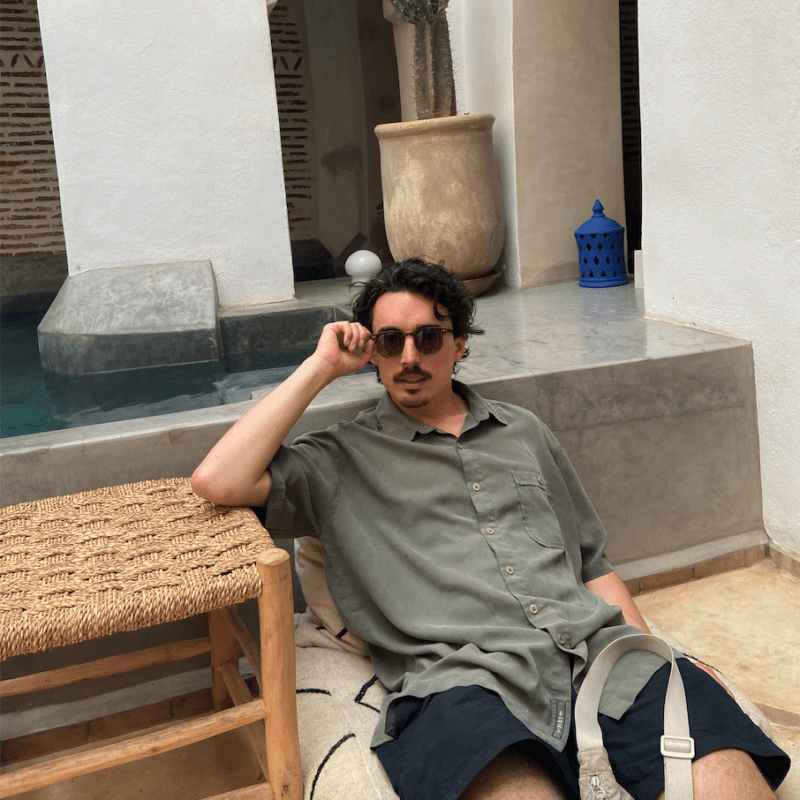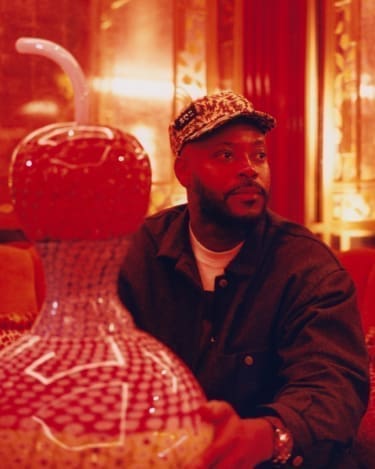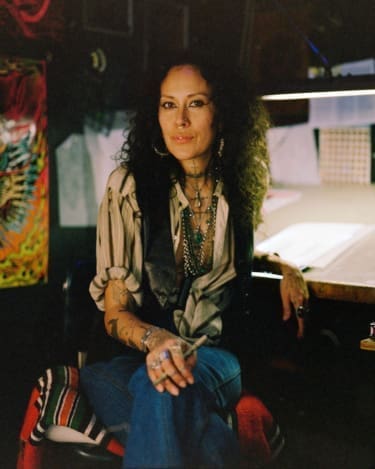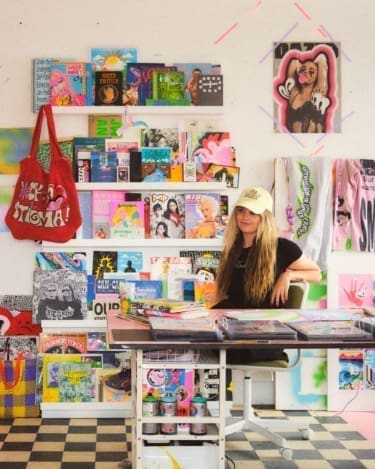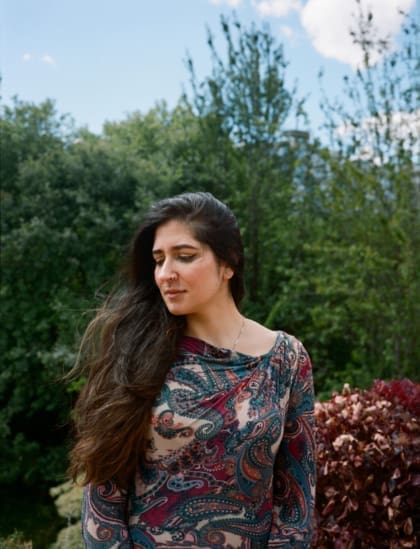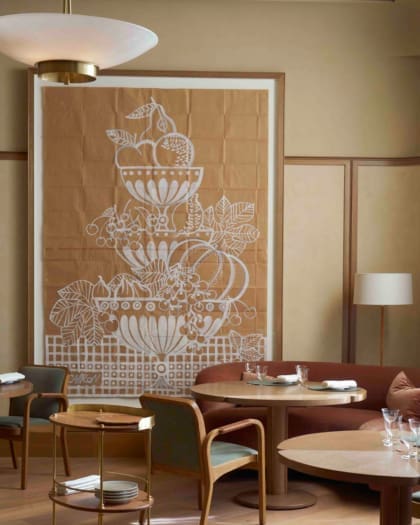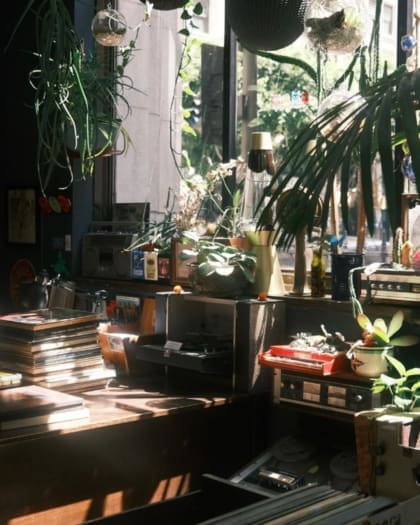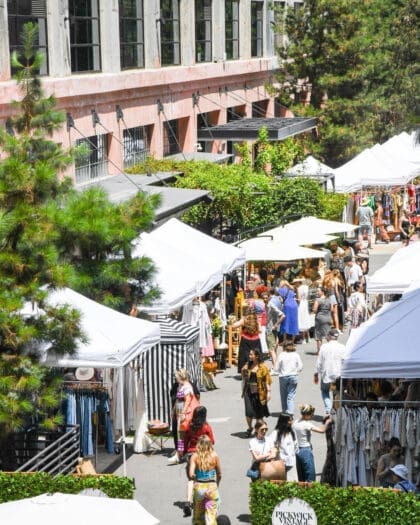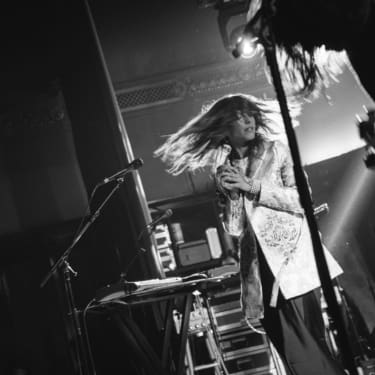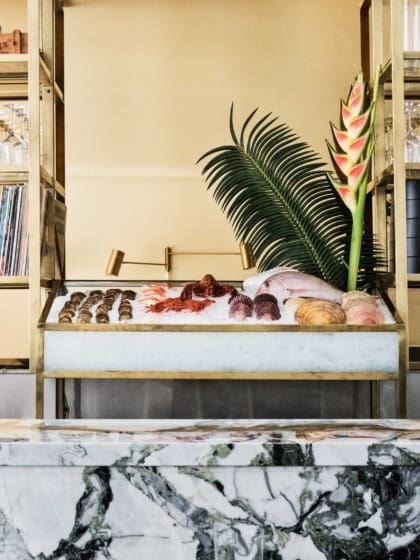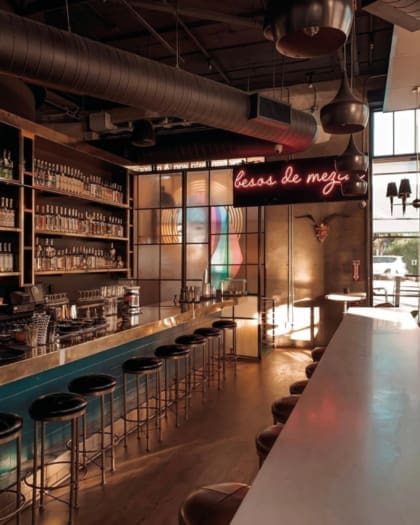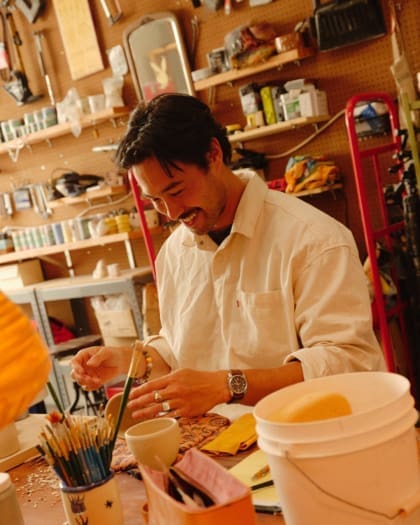
Daniel Dooreck on translating Americana into joyful pottery
From his Mud Shop in East Hollywood, Daniel Dooreck discusses his “retaliation against sh*tty mass-produced ceramics”, and how Californian road trips recharge his creativity
Daniel Dooreck was working as a successful wine sommelier in LA when he started learning pottery as a hobby. During the pandemic, he decided to sell some of the pieces he’d made. Within a week, he had sold out his stock and quit his job to set up Danny D’s Mud Shop out of his garage in Echo Park, East Los Angeles.
He quickly outgrew his garage and now works from The Mud Shop, his East Hollywood storefront and studio. With the disarmingly simple mission of “turning mud into really nice ceramics”, his work is thrown on the wheel and features cheerful, colourful designs that are carved and painted onto the surfaces of bowls, vases, cups and lampshades. Motifs such as cactuses, cowboys, burning dice and roaring panthers draw on the visual culture of the American West and the LA tattoo scene, brimming with the positivity and enthusiasm of their maker. Pieces are stocked globally, including Earl of East and Goodhood in London.
Dooreck discusses how he keeps things unpretentious and humble in his studio, and why travel recharges his creativity.
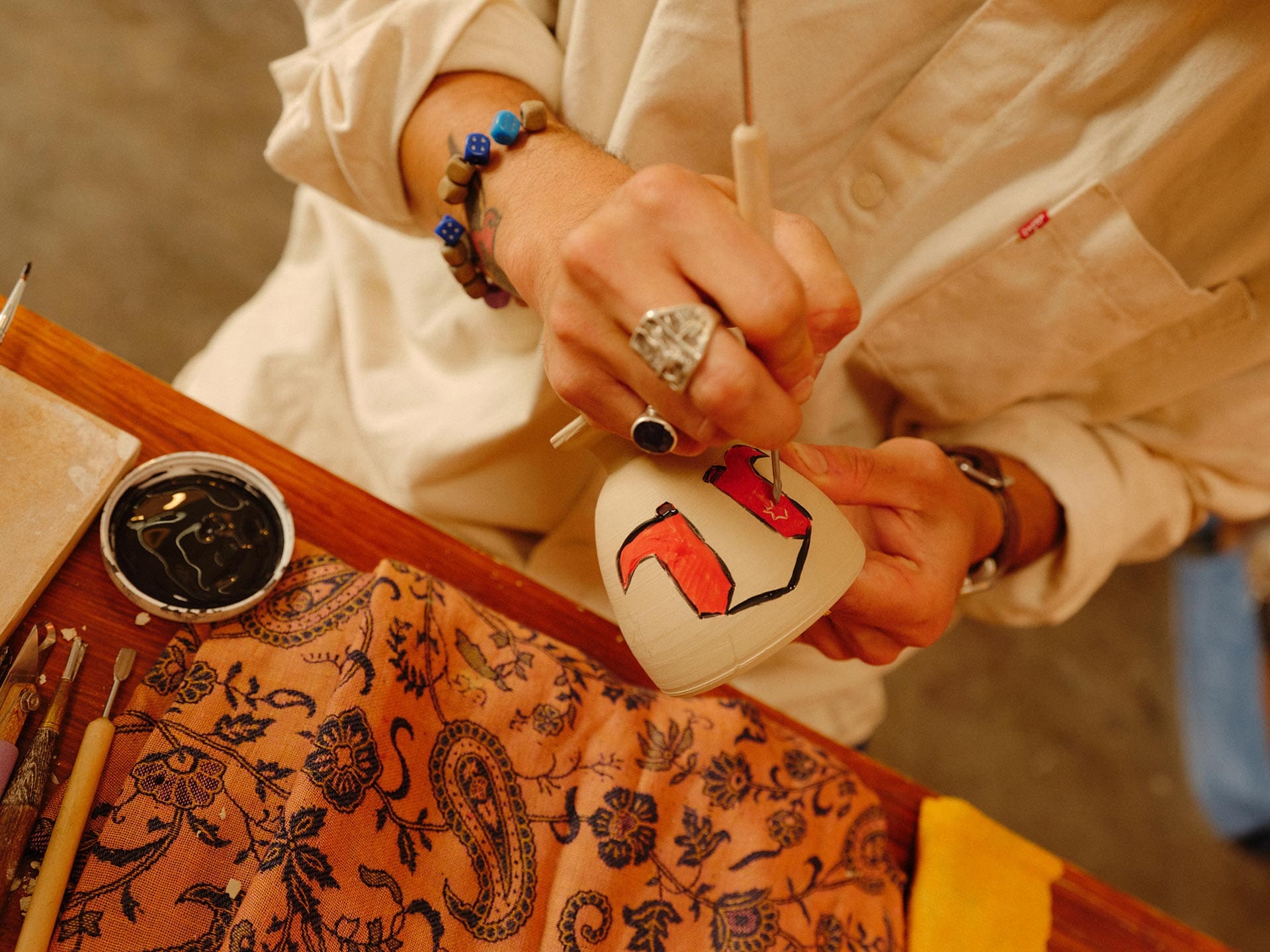
The appeal of clay
Tell us about The Mud Shop. What can a visitor expect?
The Mud Shop is our storefront in East Hollywood, but it also serves as our production studio. We want visitors to feel as though they have entered someone’s living room, with wood panelled walls and quirky thrift finds. The 30 ft bow truss ceilings make it feel huge. I used to work out of a studio away in Lincoln Heights, but I missed that personal interaction. The store is a way to connect with the community.
Clay has had a renaissance in recent years. Why do you think that is?
I think all forms of tangible art are having a renaissance. People are looking to unplug, get offline, and use their hands more. This is what I was first attracted to, but ironically as the business grows, I am on my computer more.
I’m drawn to pottery because it’s very hands on and unpretentious. I can wear the same dusty clothes and be comfortable. I put on my overalls and I get really dirty. But the really cool thing is you can see a final product finished in a week if you are diligent. It is a very demanding job; it’s hard on my back, but I love it.
You initially studied kinesiology. Does this ever inform your practice?
Never. I just know how to stretch out. Staying in shape in this type of industry is half the battle.
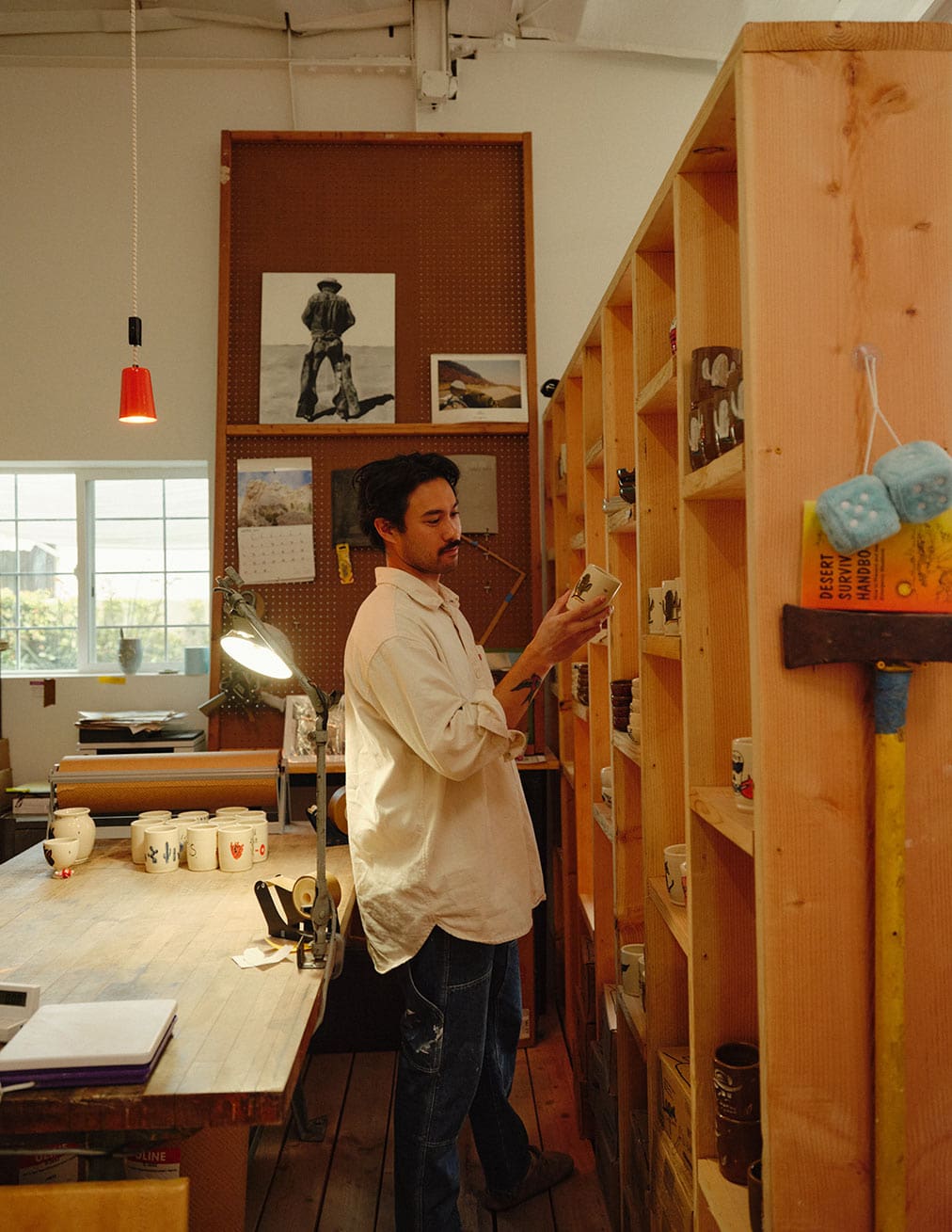

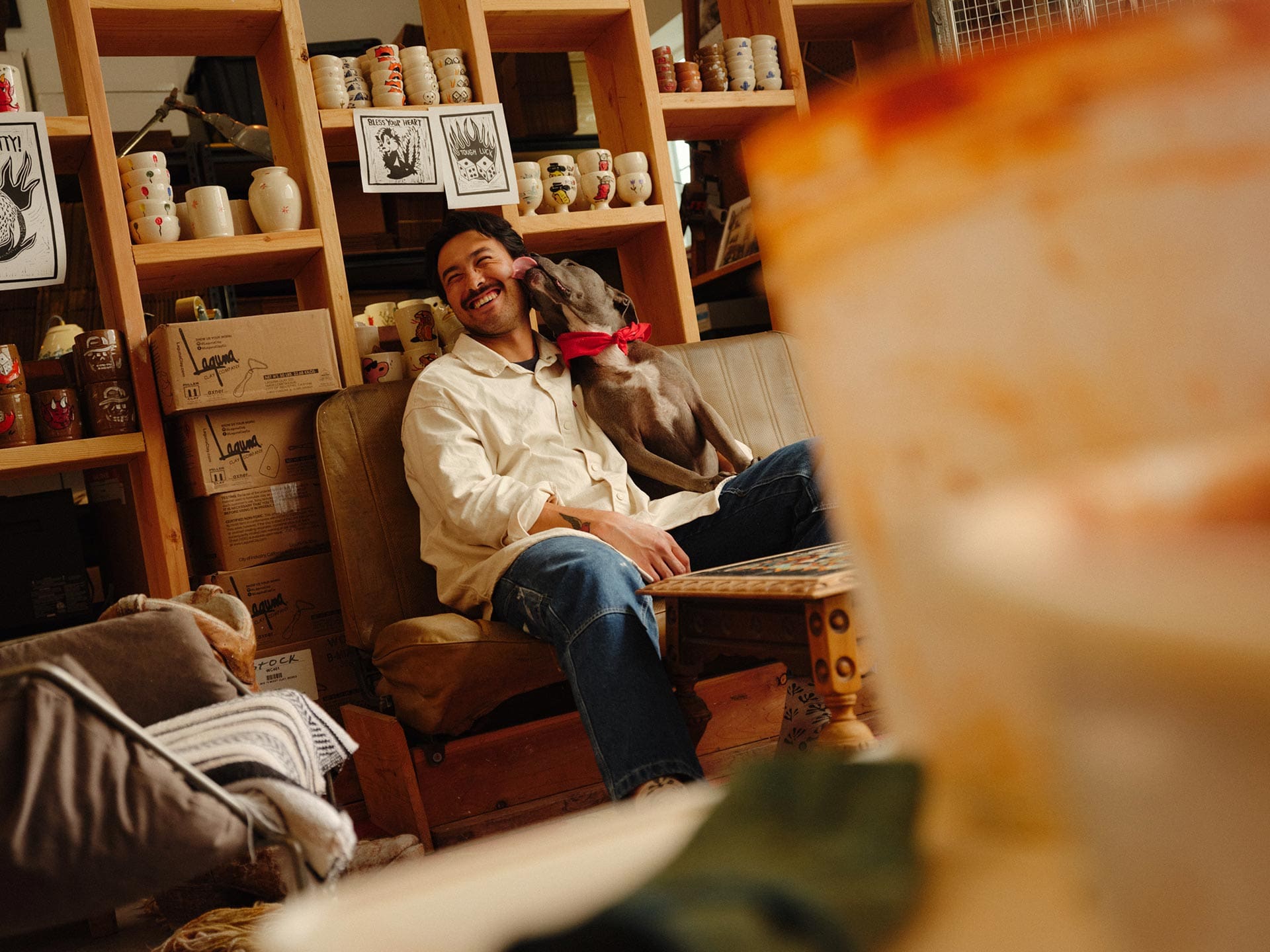
The creative process
When you create a new design, how do you begin?
There is always a sketch, and everything I do is wheel thrown. The most recent form I’ve been playing with is a ceramic pendant lamp, which has been very well received. A lamp is just an upside-down bowl at the end of the day, with a hole through it.
In terms of illustration and design work, I draw from a lot of things I see and like. I’ll go to a thrift store and just snap 50 photos of old-school paintings and Americana things that I see. I follow a lot of tattoo artists and I really admire their illustrations. For instance, I love the Felix tattoo – the classic Americana cat. By the time I’ve translated it to a vase, it has gone through so many different formats. I like finding inspiration through motifs and ideas, and recently I’ve been adding catchy little phrases to my pieces.
What is your process for making a whole piece?
I throw, wait a few days, then trim, which is when I add a foot ring on the bottom and stamp my ring on the base, which I use as my maker’s mark. Then I wrap it in plastic and keep it on a wrapped shelf to dry. I wait until the clay is leather hard – when it has good structure but is still pliable – and carve the design into the piece. Once it’s dried a bit more, I can paint.
People want handworked stuff, when you know the person is really on it. I think people enjoy my work because every piece is a little different – you can see where I carved it, the tool I used and the stroke. That’s really cool for me.
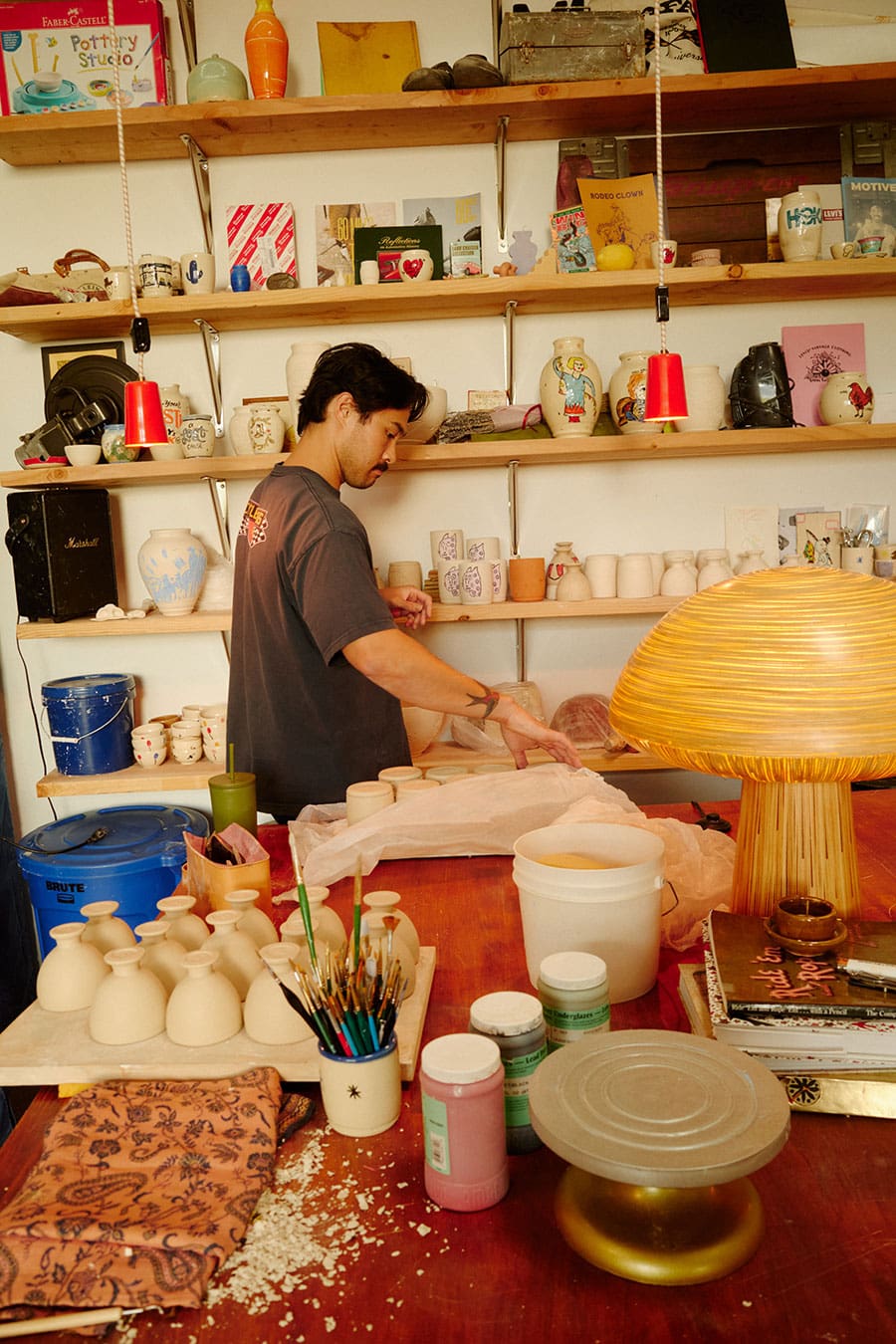
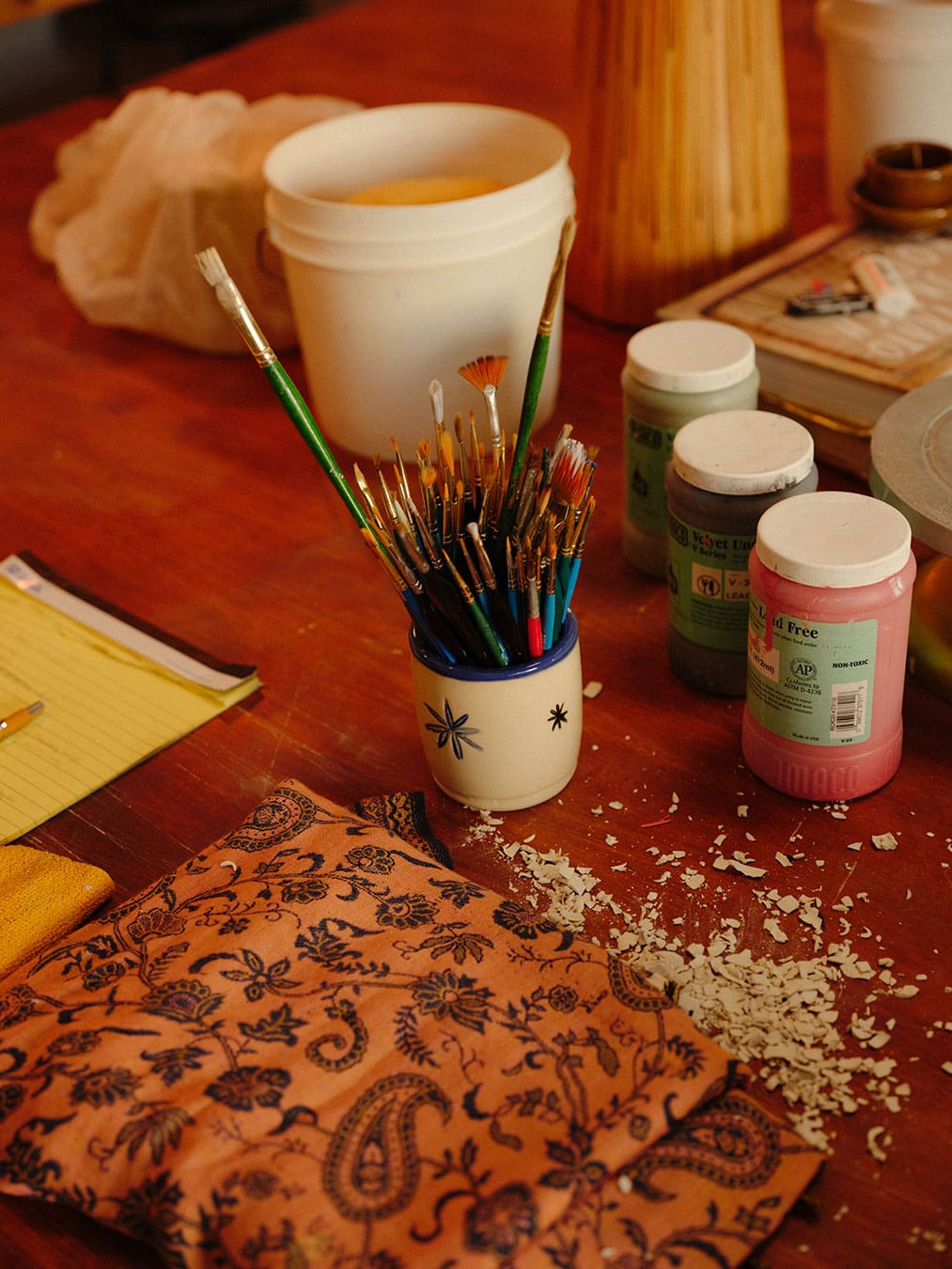
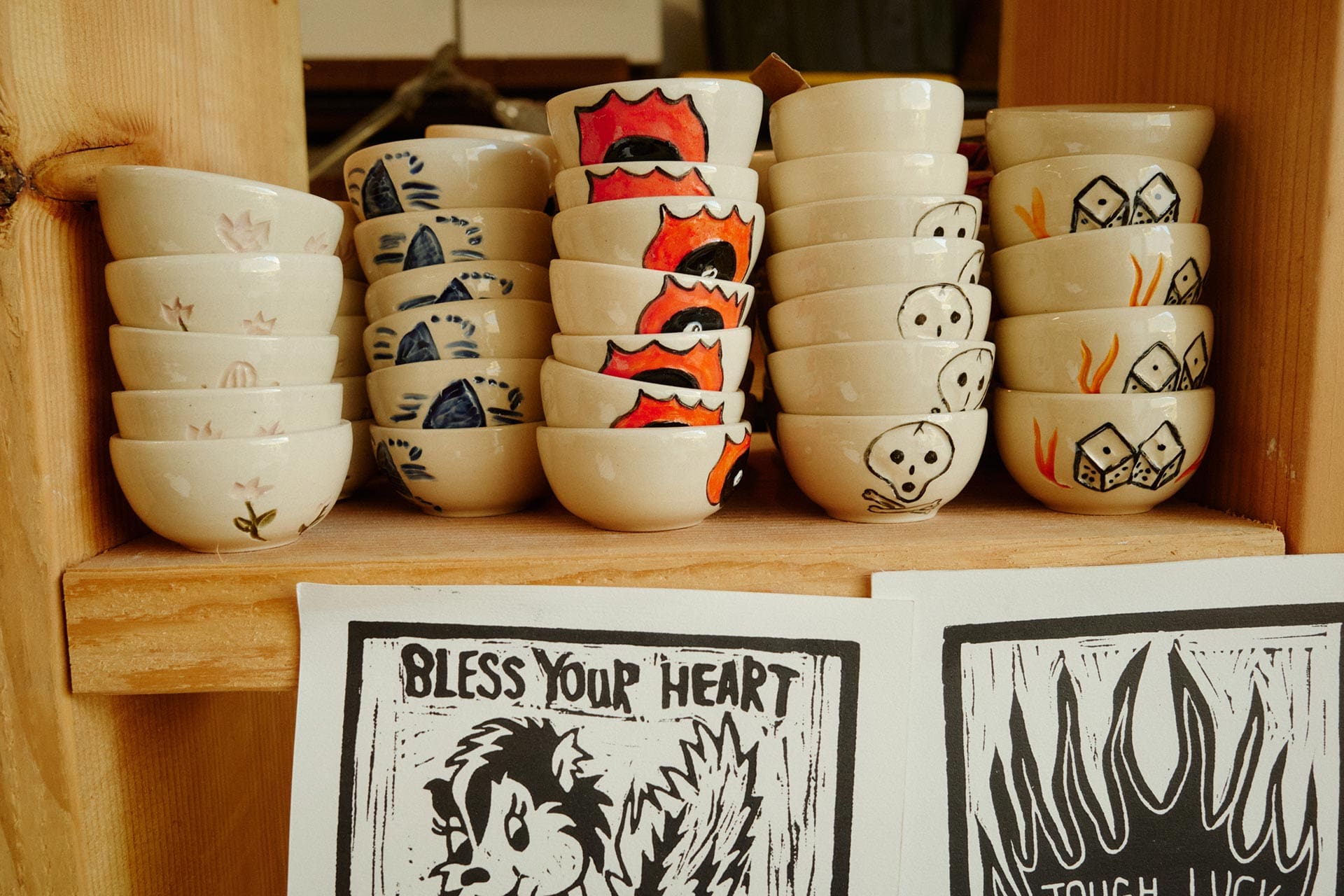
The importance of travel
Does travel inform your creativity?
At a basic level, I think it just recharges you. I don’t fly to many places to be honest – I probably do one or two trips a year – but I drive a lot of places. I have a very deep interest in old trucks. I love old SUVs, particularly old Toyotas – I own three. In California you are kind of blessed to be able to road-trip a lot of different places. I do that a lot and, on the way, if I see a store, I will tail back, snap some photos and see if there’s anything cool to buy.
I go on a short trip once a month or two. I think it’s important. There was a time when I wasn’t doing it, when I moved into the new studio and business was so crazy, and I felt the strain. As a freelancer and small business owner, the ability to step away and have the option to go on a trip when I want is really valuable.
Even though we are busy, we’ve been doing it more. I think it is almost as important to not work as it is to work.
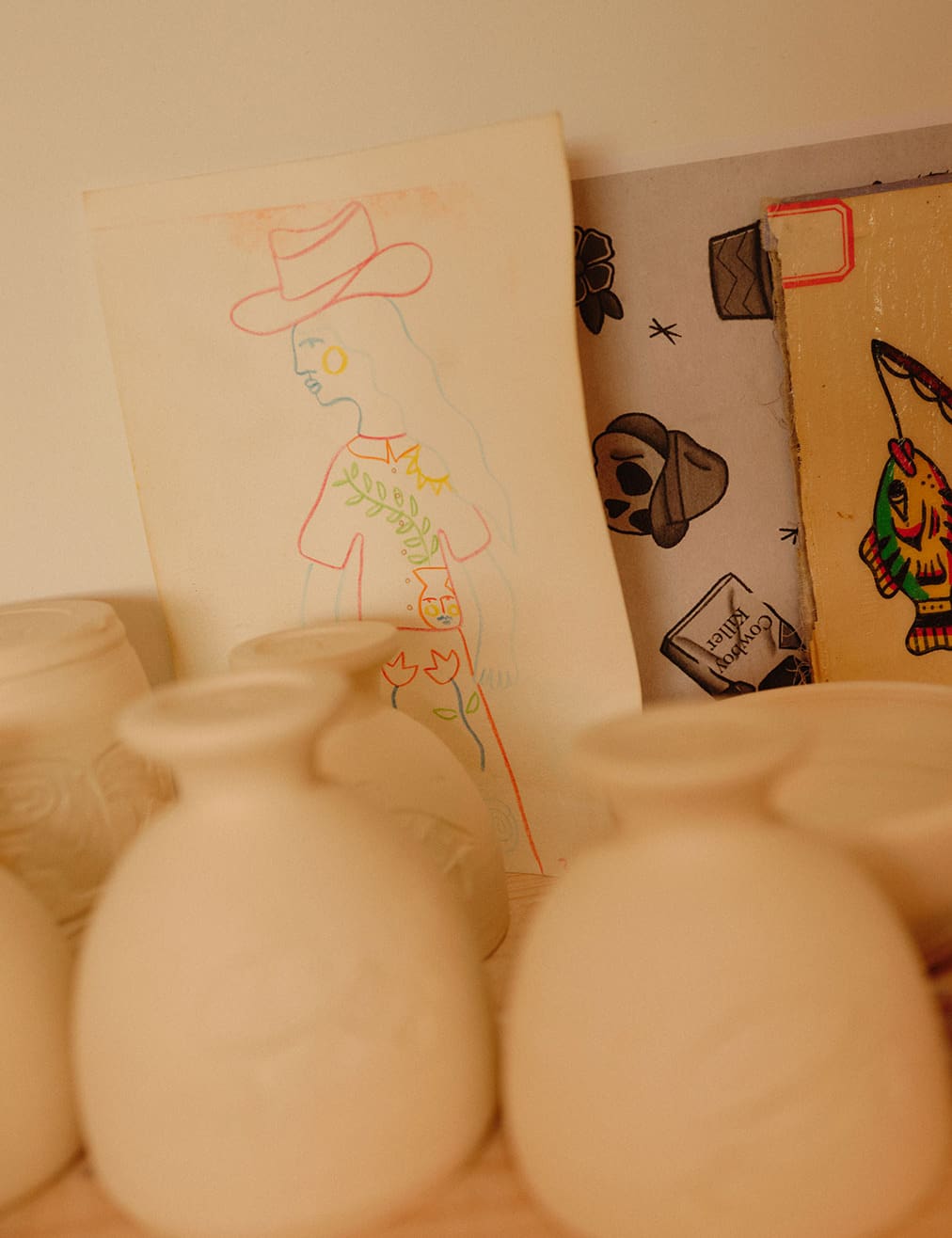
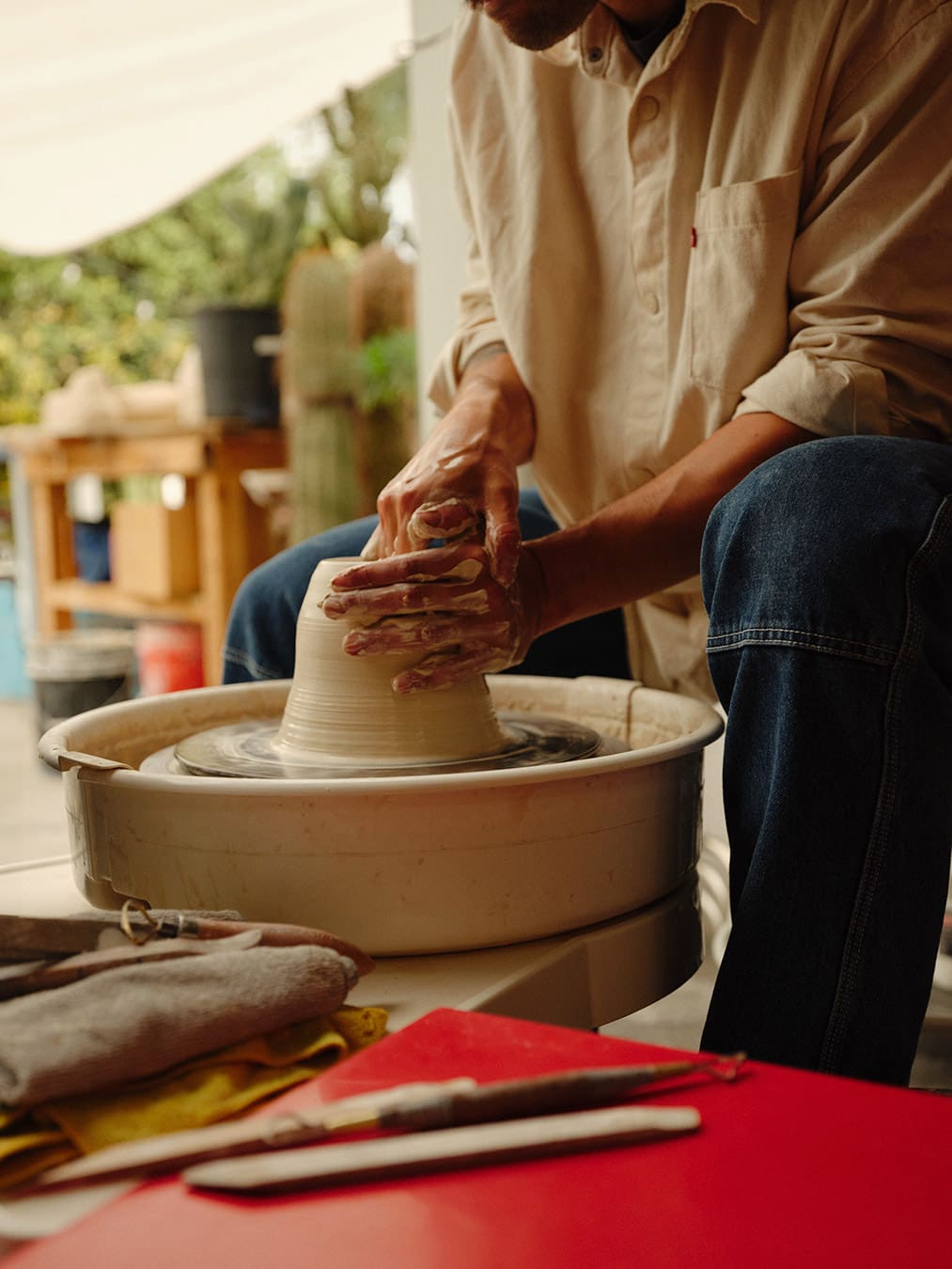
Are there favourite spots in California that you head out to?
We’ve just been to Borrego Springs, just east of San Diego, really close to the Mexican border, where it’s all canyons and desert. I love Mammoth Lakes in the north, which is close to Nevada in the Eastern Sierras. It’s about five hours away from LA and is all alpine lakes and stuff like that. August is the best time to go, when most of the snow has melted and everything is green and you can swim in the lakes. Those are pretty special places.
My parents live in Santa Barbara so that’s an easy place to go for a quick getaway. It’s only an hour and a half away. Going to Baja in Mexico is always a good time. My friends and I do that. It’s cheap, it’s not that far. Obviously the food is great, and you’re in a different country, which is crazy.
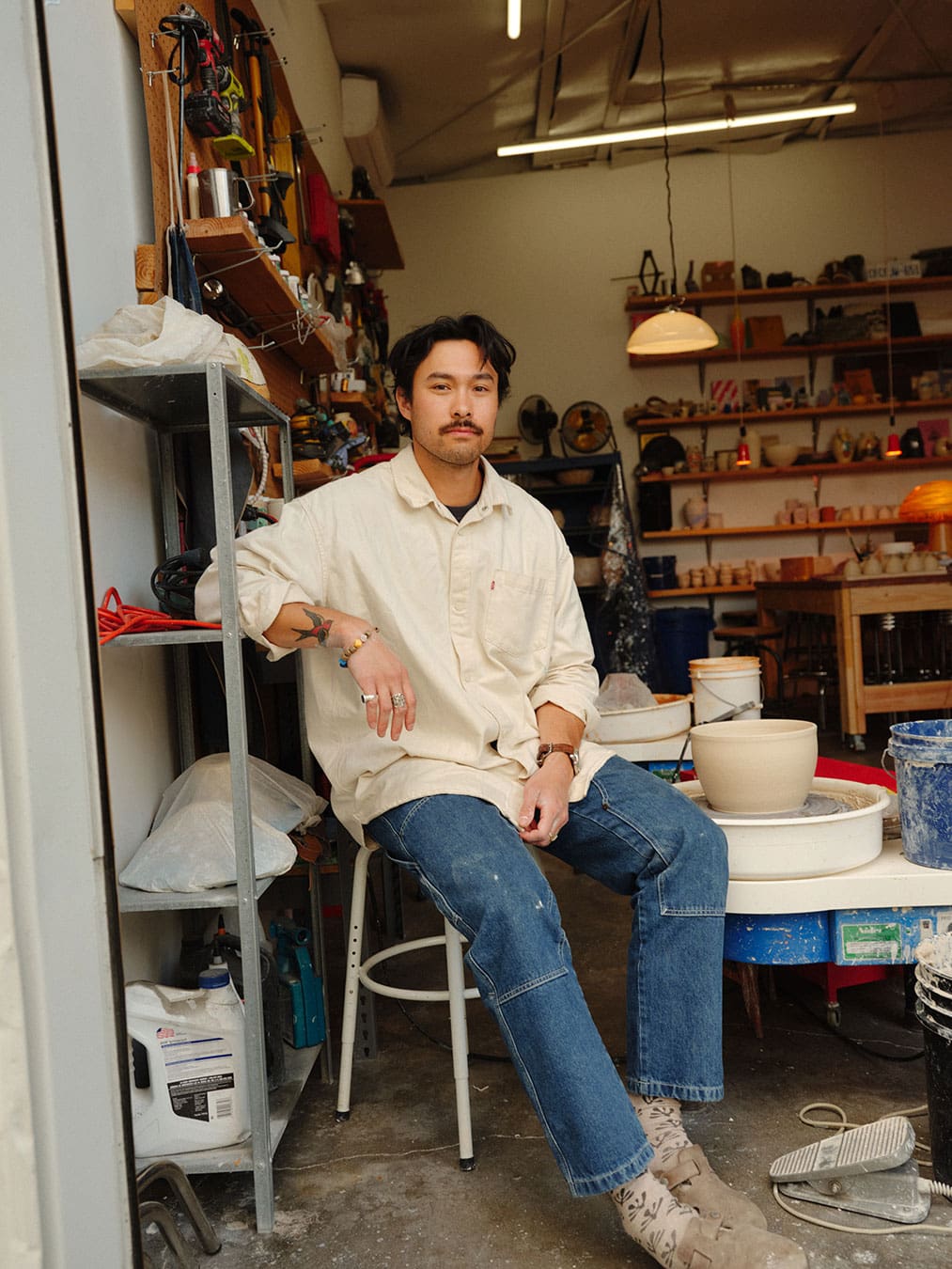
What do you hope people feel when they interact with your work?
When someone has one of my pieces, I want them to know how handmade it is. My work is a retaliation against shitty mass-produced ceramics. I have worked on every piece in my studio. There is also a dichotomy running through my work: the piece is expertly thrown – I don’t skip any steps in terms of structure and technique – and then has a quirky illustration on it that I hope is heartwarming to the people who use it. I want someone to use the cup and think, “Wow that’s cool, someone has made that with their hands,” but at the same time, not to be precious about it. Dishwash it, bang it about, because at the end of the day I’m still here making cups.
My work has such a wide range of styles – some say “Fuck you”, others are just flowers or a cute duck. Then others with a really serious cowboy design. I hope people find one that brings joy to them.
That’s awesome. A lot of care has been taken in the making of it, but it’s also lighthearted and joyful and just fun.
Yeah that’s really important to me. I don’t call myself a ceramicist or a ceramic artist, I’m a fucking potter – I love it and I’m proud of it.
My main objective is to stay humble. I don’t need a million people following me on social media; I need like 10,000 badass motherfuckers buying my cups that really respect and love the work. Maybe they will collect a few pieces or fill up their cupboard one day.
Danny D’s Mud Shop, 4855 Fountain Ave, Los Angeles, dannydsmudshop.com
